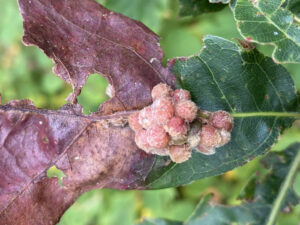
Callirhytis piperoides is a gall that seems to erupt from an oak leaf’s midrib and can be on top or bottom of the leaf. It is found on the leaves of young northern red oak. Galls will fall off the leaf so that the insect can complete its development within the gall on the ground. / Photo Credit: Linda Williams, Wisconsin DNR
By Linda Williams, DNR Forest Health Specialist, Woodruff;
Linda.Williams@wisconsin.gov or 920-360-0665
Have you noticed any galls on oak leaves or twigs? Don’t be too surprised. There are many different types of galls that form on oaks – some are smooth, some are spiky and others are fuzzy.
Most galls on oaks are caused by gall wasps or insects such as flies and midges. Some of the gall types more commonly seen in northern Wisconsin:
- The woolly leaf gall starts as a clump of fuzzy galls attached to a leaf, but it then drops off the leaf and breaks into many separate “kernels,” each piece holding a gall wasp larva ready to pupate.
- Hedgehog galls are also fuzzy and can be found on the underside of leaves, but they don’t drop off the leaves when mature.
- Bullet galls, which form on new twigs and are often about the size of a marble, are also common this year.
- Some galls, such as oak apple galls, can be as large or larger than the acorns on that tree. Oak apple galls were very common in 2023.
- Acorn pip galls form on the acorns themselves and have an alternate life stage, creating a different fluffy gall called the woolly catkin gall.
Many galls do little to no damage to the host tree. Insecticides are not recommended because tree spraying will generally not be able to directly contact the tiny larvae feeding within the galls.
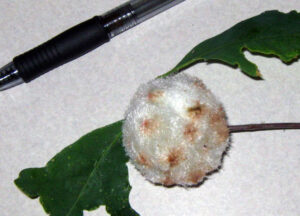
A photo of wool sower gall (Callirhytis seminator). / Photo Credit: Linda Williams, Wisconsin DNR

A photo of woolly leaf galls (Callirhytis lanata). The “kernels” form on the leaf and drop to the ground to overwinter. / Photo Credit: John Gillen, Wisconsin DNR
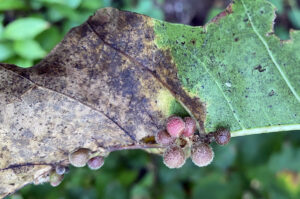
Clustered Callirhytis piperoides galls cause significant damage to leaves of northern red oak saplings. The leaf can die from that point to the tip of the leaf. / Photo Credit: Linda Williams, Wisconsin DNR

Photo of oak leaf gall midge (Polystepha pilulae) on a leaf. / Photo Credit: Linda Williams, Wisconsin DNR
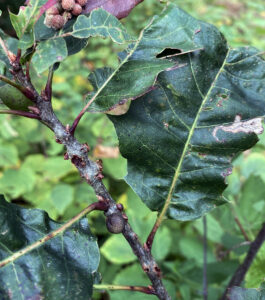
Oak bullet gall (Disholcaspis quercusmamma) is evident on northern red oak twig. There are spots where other galls that had been attached have fallen off / Photo Credit: Linda Williams, Wisconsin DNR

Oak leaf seed gall (Kokkocynips decidua) grows on an oak leaf. In the fall, each seed gall readily detaches and falls to the ground. / Photo Credit: Linda Williams, Wisconsin DNR
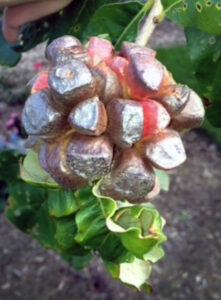
Photo of pine cone oak gall (Andricus quercusstrobilanus) on a tree. Each “kernel” will drop to the ground to overwinter. / Photo Credit: Linda Williams, Wisconsin DNR
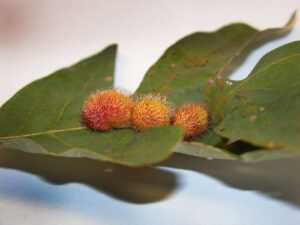
Closeup photo of hedgehog gall (acraspis erinacei) on an oak leaf. / Photo Credit: Linda Williams, Wisconsin DNR
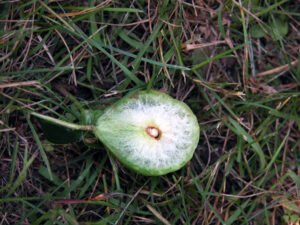
Photo of a fallen oak apple gall (Amphibolips sp.). Several species produce oak apple galls on northern red oak. This gall is cut open to show the larvae in the middle of the gall. / Photo Credit: Linda Williams, Wisconsin DNR
